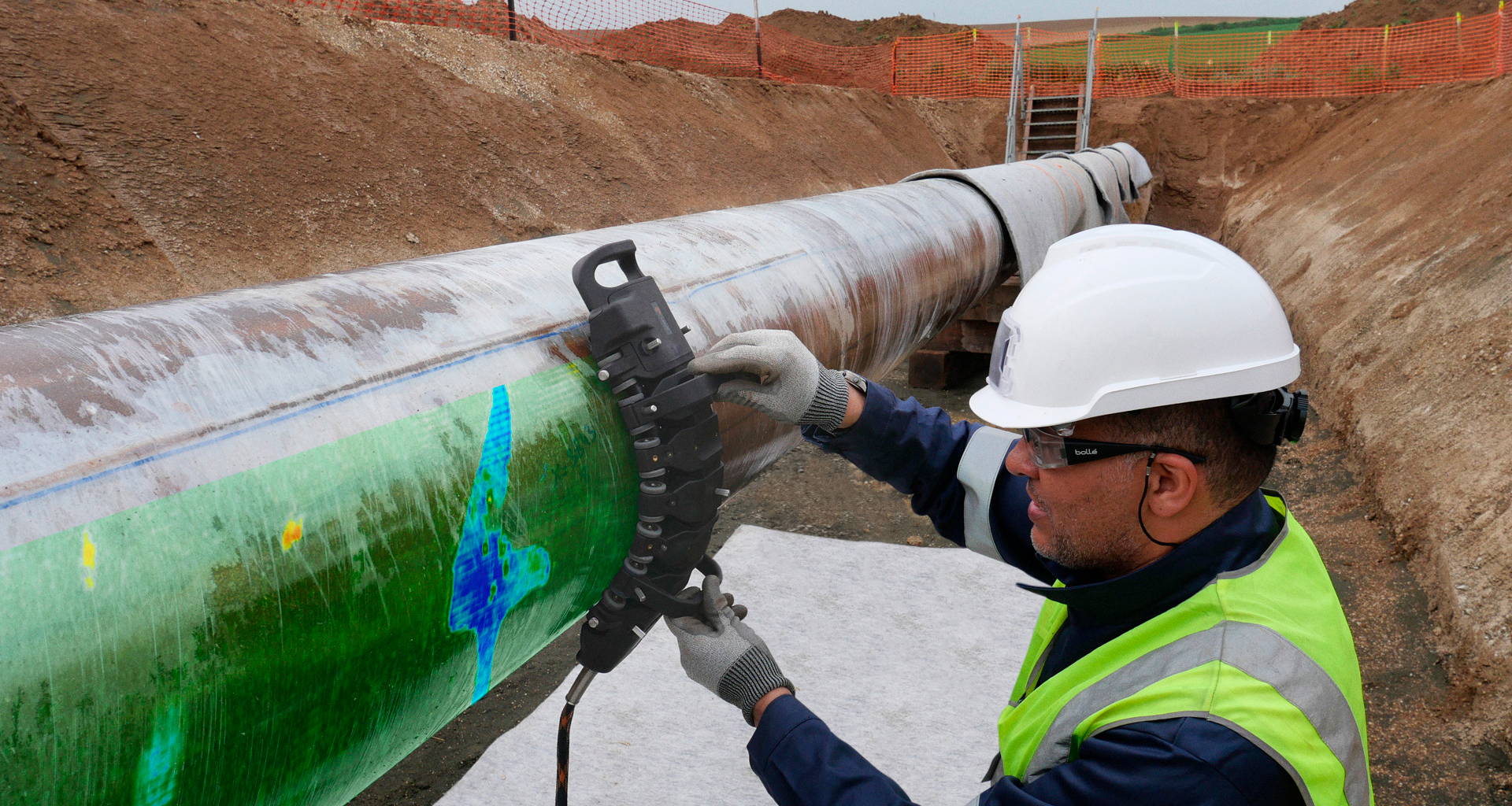Eddyfi Technologies provides the highest performance non-destructive testing (NDT) inspection technologies in the world, helping OEMs, asset owners and service companies enhance productivity, save lives, and protect the environment. We focus on offering advanced phased array ultrasonic testing, eddy current array, and other ultrasonic and electromagnetic equipment including instruments, sensors, software and robotic solutions to key industries such as aerospace, energy, mining, power generation, and transportation.
About UsFeatured Blog Post
Transforming Pipeline Integrity with the Power of Spyne's Circumferential Encoder

Latest News
April 30, 2025
Eddyfi Technologies Launches WeldXprt™: Meet the Full Circle Solution for Pipeline Girth Weld Integrity
WeldXprt™ is a turnkey inspection solution purpose-built for pipeline girth welds, combining advanced software, ultrasonic instrumentation, and motorized scanning into one integrated workflow. Built for performance and designed for the field, WeldXprt sets a new benchmark for pipeline integrity.

Other Featured News
-
Previan Announces New President of Eddyfi Technologies
March 24, 2025
-
Eddyfi Technologies Revamps Software Business Model
May 1, 2024
-
Eddyfi Technologies Launches TubePro 6: Revolutionizing Heat Exchanger Tubing Inspections with Enhanced Reporting Capabilities
March 27, 2024
Upcoming Event
Eddyfi Technologies at PANNDT 2025
Eddyfi Technologies is proud to participate in PANNDT 2025, the Pan-American Conference for Non-Destructive Testing, hosted by CINDE in Niagara Falls, Canada, from June 9 to 12, 2025. This event brings together NDT professionals, researchers, and industry leaders from across the Americas to explore the latest advancements in inspection technologies and applications.

Other Featured Events
-
Eddyfi Technologies at ILTA 2025
June 9, 2025
Join Eddyfi Technologies at ILTA 2025, the leading event for the liquid terminal industry, happening in Houston, Texas, from June 9 to 11, 2025. Connect with professionals from across the terminal operations, storage tank, and logistics sectors to explore the latest innovations in safety, inspection, and asset integrity management.
-
Eddyfi Technologies at MegaRust 2025
June 10, 2025
Welcome to Eddyfi Technologies' presence at MegaRust 2025, the premier event for naval corrosion control, taking place in Hampton, Virginia, USA, from June 10 to 12, 2025. This is where key players in the naval maintenance and corrosion industries gather to share insights, explore innovations, and shape the future of shipboard integrity.
-
Eddyfi Technologies at DRC Mining Week 2025
June 11, 2025
We’re excited to announce our participation in DRC Mining Week 2025, taking place in Lubumbashi, Democratic Republic of Congo, from June 11 to 13. As one of Africa’s most important events for the mining and minerals industry, this is where innovation meets opportunity in the heart of the copper belt.





